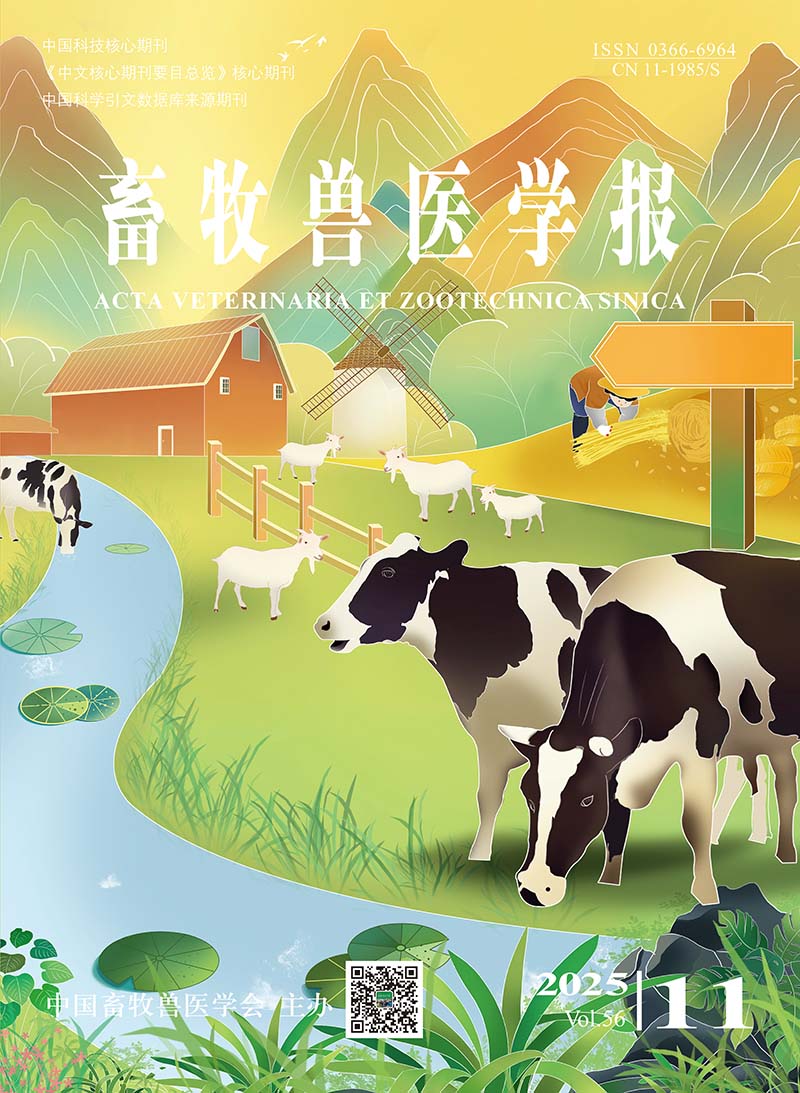-
Analysis of Influencing Factors on Blood Indicators of Dairy Cows at High-altitude Area
- HUANG Shangzhen, MA Longgang, LOU Wenqi, NING Jingyang, ZHANG Hailiang, HU Lirong, ZHA Qiong, LI Bin, XU Qing, BASANG Luobu, WANG Yachun
-
2023, 54(5):
1964-1978.
doi:10.11843/j.issn.0366-6964.2023.05.018
-
 Abstract
(
191 )
Abstract
(
191 )
 HTML( )
HTML( )
 PDF (6690KB)
(
287
)
PDF (6690KB)
(
287
)
-
References |
Related Articles |
Metrics
The study aimed to explore the characteristics and influencing factors of blood indicators for dairy cows raised at high altitude in China. A total of 435 healthy lactating Holstein cattle of different purity were used to measure the phenotypic data, including 18 hematological parameters, 3 blood gas indexes, 4 electrolyte indexes, and 2 biochemical parameters. Correlation and variance analyses were further carried out to determine the phenotypic correlations among corresponding phenotypes and significant influencing factors that should be addressed in follow-up studies, in which the farm, month age, lactation stage, body condition score, Holstein breed composition, and measuring time were considered in variance analysis. The results showed that the white blood cell count, red blood cell count (RBC), and platelet count of dairy cows raised on plateau were (7.66 ±2.14)×109 cells·L-1, (6.94 ±0.74)×1012 cells·L-1 and (405.73 ±224.48)×109 cells·L-1, respectively; and their partial pressure of oxygen (PO2) and the partial pressure of carbon dioxide (PCO2) were (11.28 ±1.61) kPa and (3.39 ±0.38)kPa, respectively. Among the 27 blood indicators, the mean corpuscular hemoglobin concentration (MCHC), platelet distribution width, blood pH, sodium ion concentration (Na+), and chloride ion concentration had small inter-individual variation with variation coefficients being less than 5%. In the correlation analysis, the PCO2 and PO2, as well as PCO2 and pH had correlation coe-fficients of -0.53 and -0.55, respectively, showing moderate negative correlations. Conversely, hemoglobin concentration (HGB) and hematocrit (HCT), mean corpuscular volume (MCV) and mean corpuscular hemoglobin (MCH), platelet count and platelet volume showed highly positive correlations (correlation coefficient ≥ 0.95). In the variance analysis, months of age had significant effects (P<0.05) on 15 hematological parameters, at the same time, body condition score and lactation stage significantly affected 6 indexes in erythrocyte system except MCHC (P<0.05). HGB, HCT, MCV and MCH were significantly negatively correlated with the proportion of Holstein breed (P<0.05). The value of RBC was highest in mid-lactation, while MCV and MCH were lowest at this stage. Moreover, the measuring time had significant effects on PCO2, Na+, calcium ion concentration (Ca2+), glucose concentration (GLU), lactic acid concentration (LAC), and arterial blood HCT (P<0.05). Among them, PCO2, Ca2+, and HCT appeared extreme values from 12:41 to 14:10. The effect of lactation stage was also significant on PCO2, pH, potassium ion concentration, GLU, LAC, and arterial blood HCT (P<0.05). In the early lactation stage, the values of arterial blood GLU and LAC were the lowest, while PCO2 was the highest, indicating the weakest alkalinity. Taken together, blood indicators are mainly affected by the physiological state of cows and external factors. It is important to use blood indicators to carry out health detection of dairy cattle in high-altitude area, and should take into account key factors such as lactation stage, months of age, and body condition and pay attention to the choice of measuring time.






